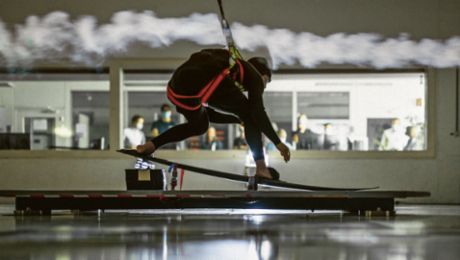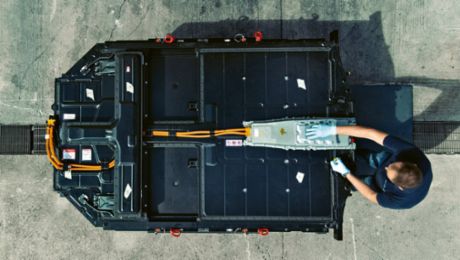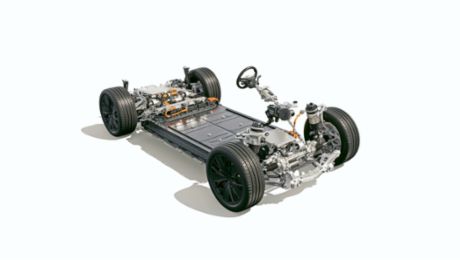It all began very modestly. In 1800, the Italian physicist Alessandro Volta presented an invention to the venerable Royal Society in London which made an unassuming impression at first, but would quickly make name for itself all around the world: the Voltaic pile, the forerunner of today’s batteries. The structure of the cylindrical object was typical of the era and consisted largely of wood—with plastic as an insulating material for the housing having not yet been invented at the time.
The functional principle of first power source, however, was actually very modern: Plates made of different metals such as copper and zinc were separated from each other by pieces of cardboard or leather that were saturated with an electrolyte (for example, salt water or lye). Today’s batteries use the same basic principle for operation. But while these early sources of power developed in the 19th century were primarily used as aids in the laboratory, today’s batteries play a key role in electronic devices and electric vehicles. And that’s not all: In the future, they are supposed to also help bring the fluctuating production of renewable energies into line with effective power consumption levels. One example of how this will be achieved is a ‘grid booster’ made of lithium-ion batteries currently being put together in Kupferzell, Baden-Württemberg, covering an area the size of four-and-a-half soccer fields. From 2025 on, it will be able to deliver a maximum of 250 megawatts of power—for one hour, amounting to a capacity of 250 megawatt-hours (MWh).
Not bad
Not, however, that this puts the grid booster in Kupferzell anywhere near the top of the list of the world’s largest batteries. That honor is taken by the Moss Landing Energy Storage Facility in Landing Harbor, California, which has a capacity of 1,200 MWh and is also based on lithium-ion batteries. Also in California—in Lancaster near Los Angeles—is the Luna LAB Energy Storage Facility, comprised of lithium-ion batteries that boast a storage capacity of 908 MWh. It can supply 170,000 households in the US state with clean electricity for four hours. Not bad for a technology that first saw the light of day 200 years ago as a concoction of wood and metal.
Info
Text first published in the Porsche Engineering Magazine, issue 1/2023
Text: Christian Buck
Illustration: Julien Pacaud
Copyright: All images, videos and audio files published in this article are subject to copyright. Reproduction in whole or in part is not permitted without the written consent of Dr. Ing. h.c. F. Porsche AG. Please contact newsroom@porsche.com for further information.





.jpg)